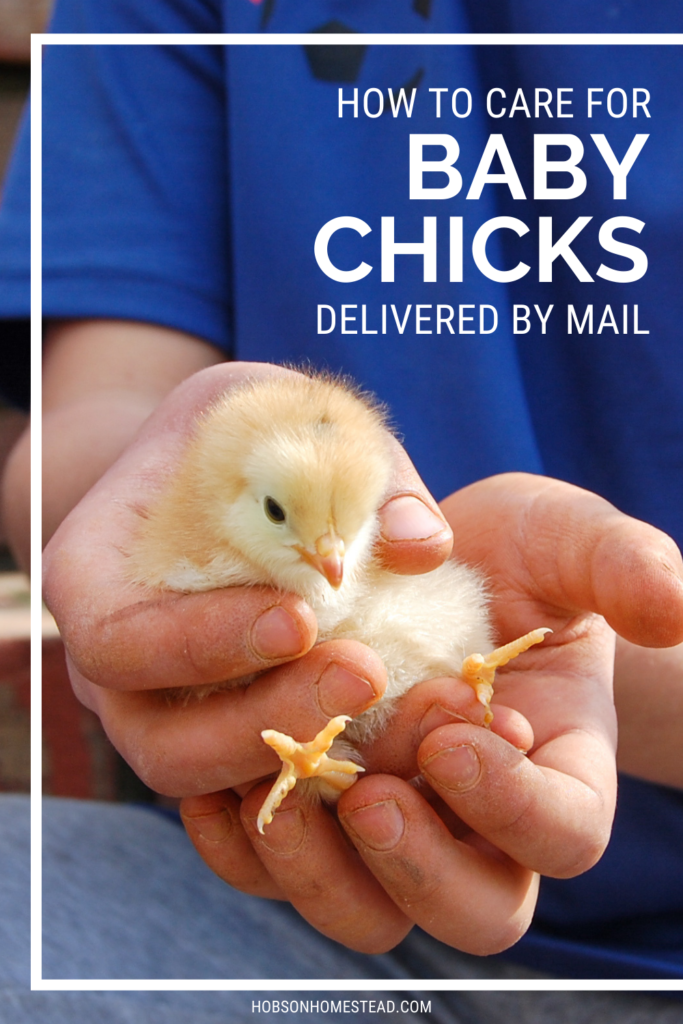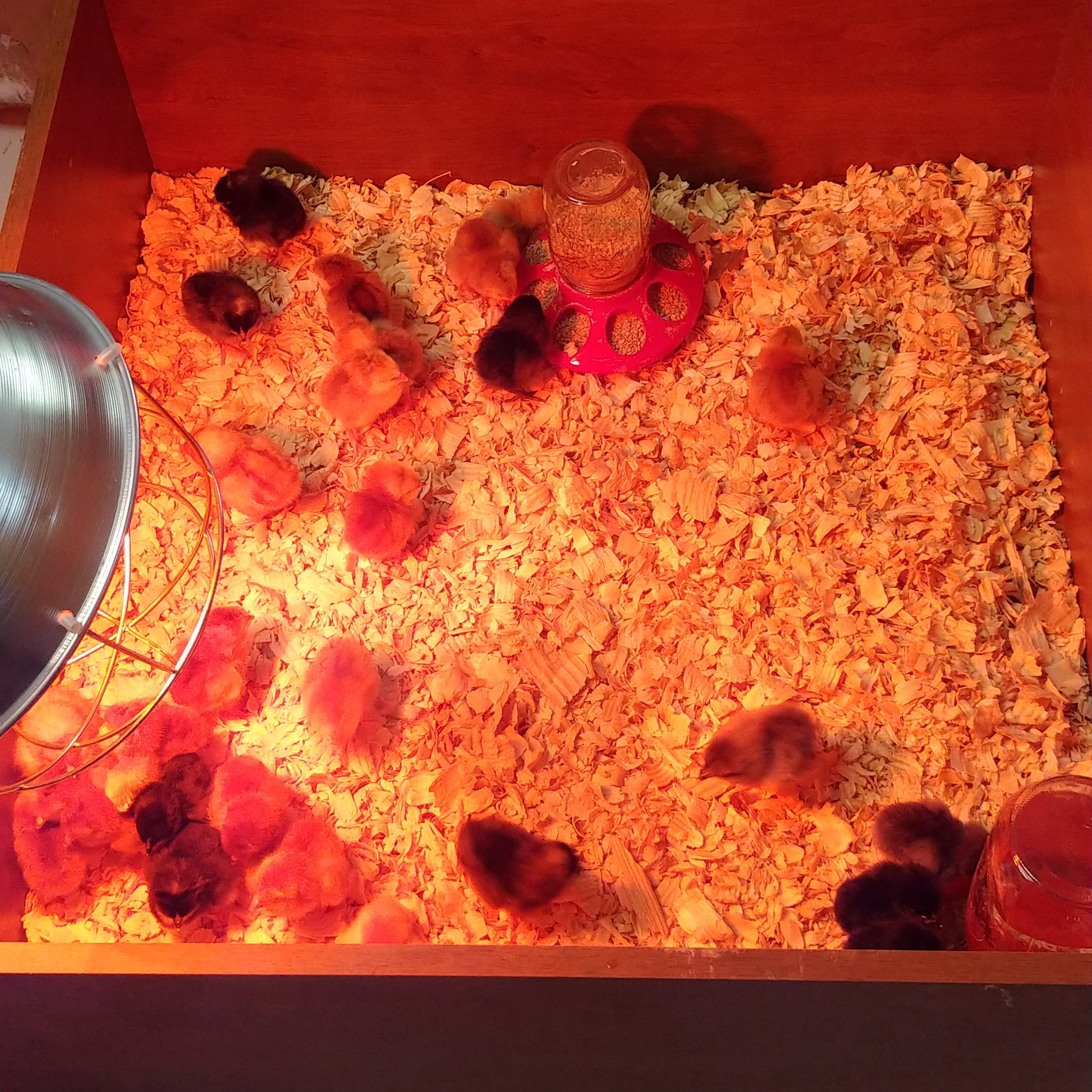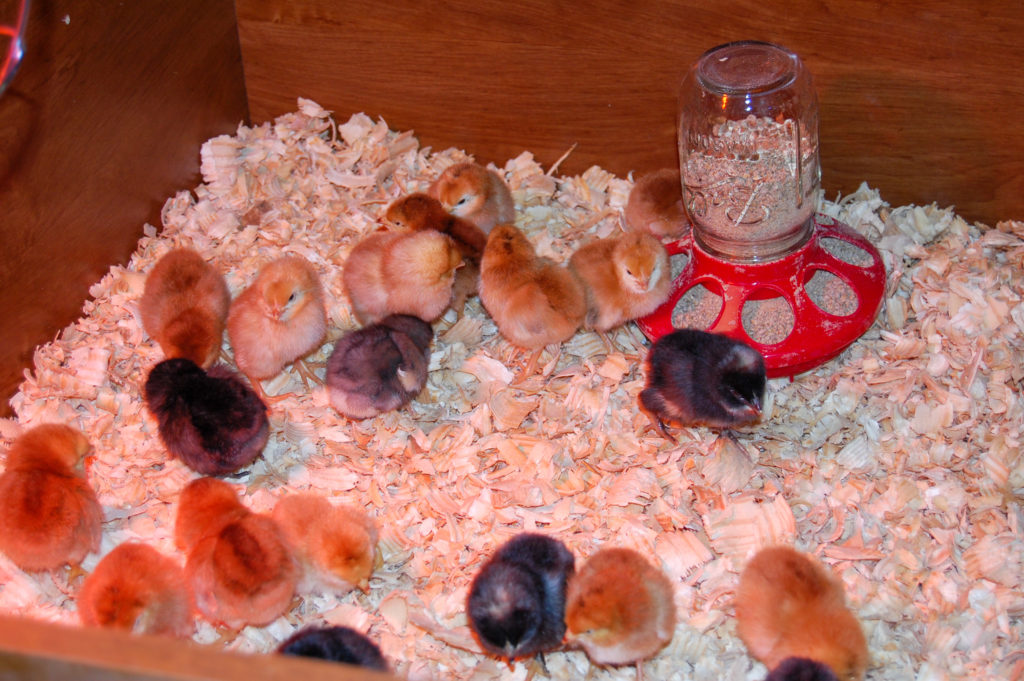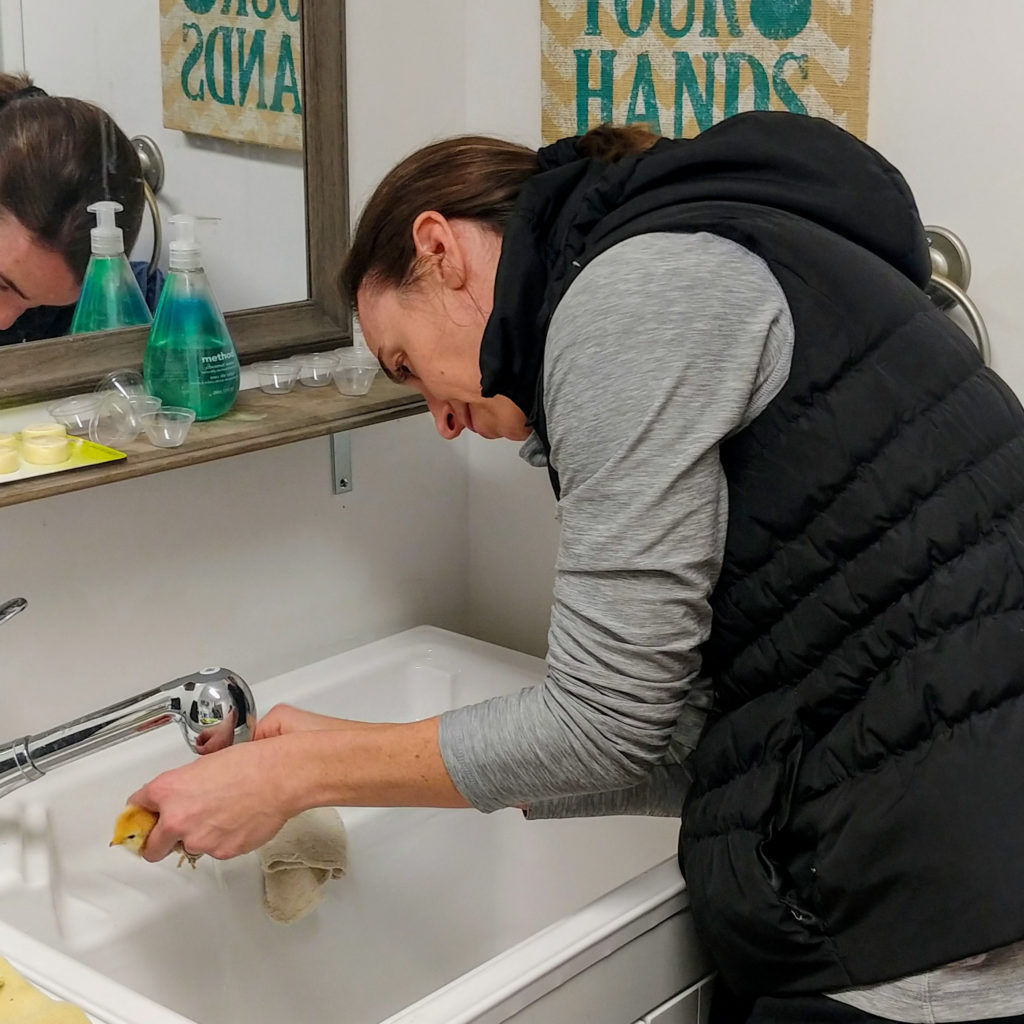After your baby chicks arrive by mail from their long (sometimes stressful) journey, be sure to check out these tips for how to care for them.
Hatcheries that sell baby chicks typically ship them mere hours after they hatch. This ensures that the chicks can survive up to 72 hours with no food or water because they are still processing the nutrients from the yolk sac. And thanks to special packaging with air holes and a minimum order size to ensure flock warmth, most baby chicks survive just fine.
But the journey itself can still be stressful, tiring and dehydrating. So it’s important that you have everything set up to care for your baby chicks when they arrive by mail.
Related: We Got 30 Baby Chicks in the Mail

5 WAYS TO PREP FOR BABY CHICKS
Brooder Box
Before you pick up your baby chicks from the post office, be sure to have a brooder box ready. The most important aspects of a brooder are to provide a place of safety (from pets or small children) where baby chicks can stay warm and grow with food and water. When they’re babies, it’s also important that the chicks’ brooder box is draft-free as they learn to regulate their body temperatures.

You can create your own brooder box using what you have at your property, such as large rubber storage bins, cardboard boxes, metal stock tanks or homemade wooden brooders. You also have the option of purchasing a pre-made brooder area, such as one of these:
Once you’ve chosen your type of brooder box, you need to put down bedding for the chick. Many people start with paper towels for few days because the chicks are learning to get their grip and it provides traction. After that, untreated pine shavings are a great affordable option for bedding that you should layer at about 1-inch thick.
Also, as your baby chicks begin to grow, be aware of the height of your brooder box. For brooders without a top, you may have to add one to your box once the chicks begin jumping and testing our their developing wings. A screen or wire mesh is an inexpensive way to add a ceiling to your brooder. For the first 1-2 weeks, 12-inch high walls will contain the chicks. But once they start jumping around 3 weeks, you will need at least 2-foot high sides to your brooder box.

Brooder Lamp
After your baby chicks’ journey through the mail, they will be ready to cozy up and get warm. It’s crucial you have your brooder lamp tested and working when you pick up your chicks from the post office. Use a brooder lamp with a clipped over one side of the brooding area so the chicks can choose whether to be under the light or not. Red bulbs are often the color of choice for brooder lamps because, unlike white bulbs, the don’t interfere with the sleep of the chicks. It’s a good idea to have two brooder lamps on hand in case one goes out unexpectedly. For those who want to forgo lamps, a brooder plate is another good option.
Regardless of your heat source, baby chicks need to be kept in a warm brooder until they are fully feathered, which can take at least 5 to 6 weeks.
Generally, the temperature at the bottom of the brooding area should be 95-100 degrees for the first week, then reduced 5 degrees each week until the chicks are 4 weeks old. If chicks are crowded together directly under the lamp, then they are cold. If they are spread around the edges of the brooding area, then they are too hot. Adjust the height of your brooding lamp accordingly and give them enough room to move in and out of the light to regulate their body temperatures.

Waterer
After heat, water is the second most important survival source for baby chicks at this early stage. When you bring your chicks home, make sure your water is not cold, but instead room temperature or slightly warm. This will help them to warm up from their journey by mail.
We use a simple poultry waterer and screw in a quart-sized mason jar to hydrate our baby chicks. It’s cheap and effective—and you can easily find it online or at most any hardware or feed store.
Once one chick finds the waterer, most of the others will follow suit. But you can also dip your chicks’ beaks into the waterer when you initially place them in the brooder to give them a little help.
It’s important to clean out the waterer at least once a day and provide fresh water, even if the waterer isn’t completely empty.

Chick Starter Feed
After water, food is the next most important item for survival. For the first 8+ weeks of a chick’s life, most people feed baby chicks a chick starter feed, which is typically 22-24% protein for meat birds (called broiler starter) and 18-20% protein for laying breeds. You can buy medicated or unmedicated chick starter depending on preference. Some people use a medicated feed, but organic and pastured small farms often use unmedicated feed.
Chicks need feed with a higher protein percentage early on to help support the extra energy for growth. Many people switch chicks over to grower feeds around 8 to 10 weeks old. For laying hens, the grower ratio is 15-16% protein, while meat bird’s protein makeup is around 20%.

Pasty Butt
Pasty butt is a condition where a chick’s poop gets pasted to the booty feathers and begins to clog the vent hole, which can eventually lead to death. It’s more common in chicks sent via the mail because of the stress of the journey—and typically requires intervention on the part of the chick owner.
Some people find success addressing this issue by using a wet cloth to remove the excrement, but it didn’t work for us. Our best approach was to run the chick’s lower half under warm water to soften the stool and then use an ear swab to help pry it away from the feathers and vent. The chicks freaked out at first getting wet, but quickly relaxed once they realized the warm water felt good. Once they were clean, we dried them off as best we could and placed them under the heat lamp to continue drying.
Typically, the condition of pasty butt resolves once the chicks are 7 to 10 days old as their body grows and they begin to develop real feathers.
In the end, baby chicks require forethought and care, but it won’t be long before they outgrow their brooding box and graduate to independent, self sufficient pullets (teenagers!).
